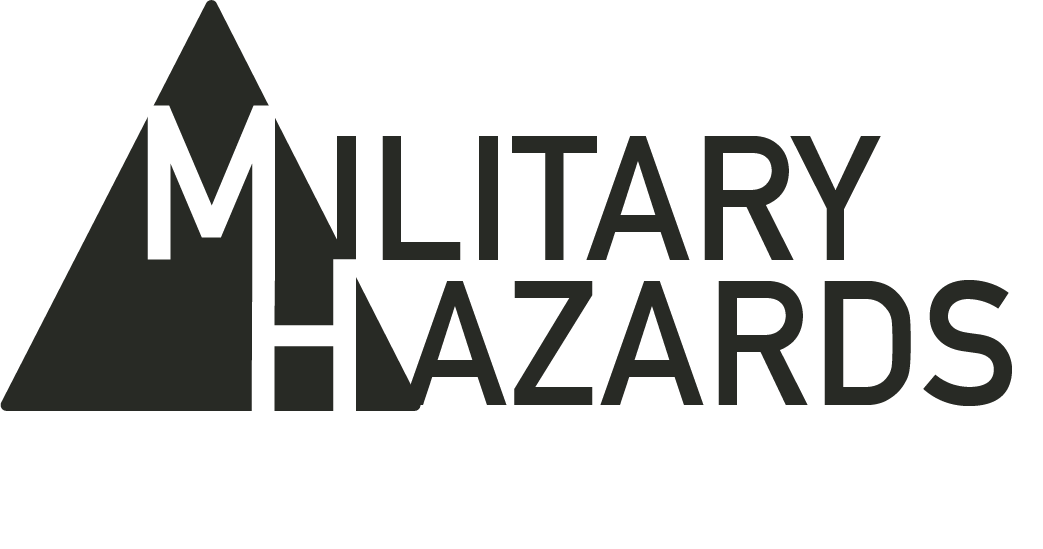Contact Our Legal Partner
"*" indicates required fields

It is no secret that our military personnel face some of the most serious occupational hazards. This includes exposure to hazardous chemicals. Depleted uranium (DU) is one particular chemical that poses serious health risks in military operations. This article explores the occupational hazards associated with depleted uranium exposure, it discusses the sources of depleted uranium, and both the short-term and long-term health risks associated with exposure to it. Lastly, we will underscore several effective strategies that can be employed to reduce exposure to depleted uranium among military personnel.
What is Depleted Uranium:
Depleted uranium, often referred to as depleted uranium for short, is a byproduct of the uranium enrichment process that is used within nuclear reactors and nuclear weapons production. depleted uranium is a uniquely dense, weakly radioactive metal and is primarily used in military applications because of its high density. depleted uranium, therefore, provides armor-piercing capabilities in ammunition and armor plating.
Sources of Depleted Uranium:
For the reasons discussed above, depleted uranium is primarily encountered by military personnel in scenarios involving the use of depleted uranium based munitions, such as tank shells and bullets. When these munitions strike their targets, they aerosolize depleted uranium particles which can be inhaled or contaminate the surrounding environment.

Short-term Health Risks:
Short-term exposure to depleted uranium can lead to immediate health problems. Inhalation or ingestion of depleted uranium particles may cause the following health conditions:
- Respiratory irritation
- Lung damage
- Kidney toxicity
- Localized radiation burns
- Chest pain
If military personnel experience symptoms such like those mentioned above after potential depleted uranium exposure, immediate medical attention is crucial.
Long-term Health Risks:
Long-term exposure to depleted uranium, on the other hand, can pose significant health risks to military personnel. Because depleted uranium is a weakly radioactive material, chronic exposure can lead to adverse effects on various organs and systems. Some of the most popular associations between depleted uranium exposure and health are as follows:
- Increased risk of kidney damage
- Lung disorders
- Reproductive issues
- Cancer (particularly lung and bone cancer)
- Brain damage
It is important to note too that the health concerns associated with exposure to depleted uranium vary depending on the amount and frequency of the exposure. Additionally, these health effects also depend on the current health conditions of those individuals that are exposed. Again, if military personnel believe that they have been exposed to depleted uranium, they should contact a medical professional immediately.
Protection and Mitigation:
To minimize the risk of depleted uranium exposure among military personnel, several preventive steps are available that should be taken. Below are a list of several worth considering:
- Training and Education: Thorough training and education programs should be conducted to raise awareness about the hazards of depleted uranium exposure. Military personnel should be educated on safe handling practices, proper use of personal protective equipment (PPE), and the importance of following established procedure to minimize exposure risks.
- Personal Protective Equipment (PPE): Appropriate PPE must be provided to personnel at risk of exposure to depleted uranium. This includes respiratory protection like respirators or masks, gloves, and full-body coverings to eliminate skin contact with contaminated surfaces.
- Decontamination: Establish decontamination procedures should be implemented to minimize the distribution of depleted uranium particles. This includes regular equipment and surface decontamination, proper disposal, and strict hygiene practices to prevent ingestion and inhalation of the particles emitted from depleted uranium.
- Environment: Implementation of regular environmental monitoring programs to assess depleted uranium contamination levels in training areas, shooting ranges, and other relevant locations should be common practice. This will help identify areas of potential exposure and facilitate targeted cleanup efforts.
- Handling and Disposal: Strict protocols for handling and disposal of depleted uranium based ammunition and equipment should be routine. Proper storage, transportation, and disposal methods are crucial to preventing the release of depleted uranium into the environment.
- Medical Monitoring: Regular monitoring of military personnel’s health should serve to identify and track any personnel who may have been exposed to depleted uranium. This includes periodic medical check-ups, laboratory tests, and screenings to detect any potential health issues that may arise due to depleted uranium exposure.
- Planning: Incorporate exposure considerations into operational planning. This involves assessing the potential risk factors associated with depleted uranium exposure and implementing steps to minimize exposure during training exercises, combat, and cleanup efforts.
- Training and Risk: Implement training programs to educate military personnel about the risks associated with exposure to depleted uranium and the importance of following these safety protocols. Effectively communicating these risks ensures that military personnel understand the risk of exposure, knows how to protect themselves, and are encouraged to report any potential exposures.
- Environmental: Rigorous environmental remediation practices in areas where depleted uranium contamination is suspected or confirmed should be implemented. This involves identifying and mitigating depleted uranium concerns, decontaminating affected areas, and restoring the environment to a safe condition.
- Research and Partnerships: Ongoing research and collaboration among scientific communities, military organizations, and health agencies should be encouraged to continuously evaluate the health risks associated with depleted uranium exposure and to develop and improve strategies to reduce these risks.
Depleted uranium exposure certainly presents significant occupational hazards to military personnel. As we have said, short-term exposure may lead to immediate health effects, while long-term exposure increases the risk of serious health conditions. By implementing preventive measures like those outlined above, the military can effectively reduce the risk of exposure to depleted uranium. Protecting the health and well-being of military service members is of the utmost importance, and minimizing the occupational hazards associated with depleted uranium exposure is crucial in achieving this goal.
